Live Cell Imaging
Observing cells by time-lapse microscopy
Observing cells by time-lapse microscopy
Quantification of cell migration speed, persistence, standardization of cell path, quantification of cargoes speed and persistence, visualization of cytoskeleton tracks, standardization of cell shape and organization, observation of polarity, lumen formation, cytoskeleton organization and organelles distribution, cell adhesion, cell polarization during migration, primary cilium observation and normalized cilium positioning, Cell migration, cell-cell contact and interaction.
Up to now, it was difficult to observe cells cultured in a substrate patterned with adherent domains of predefined geometric features by time-lapse microscopy.
Cells are cultured on substrate patterned with adherent domains of predefined geometric features in a standard glass-bottom Petri dish that enables to observe them by time-lapse microscopy.
Intracellular organization
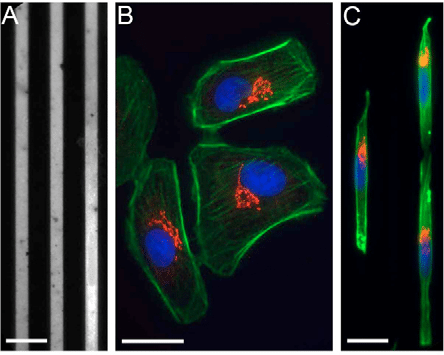
Polarization of cells on micropatterned-lines [1]
Mircopatterns (thikness of 6µm). (B) Bsc1 cells in a standard culture. (C) Bsc1 cells on micropatterns.
The actin network in green, the Golgi complex in red and the nucleus in blue.
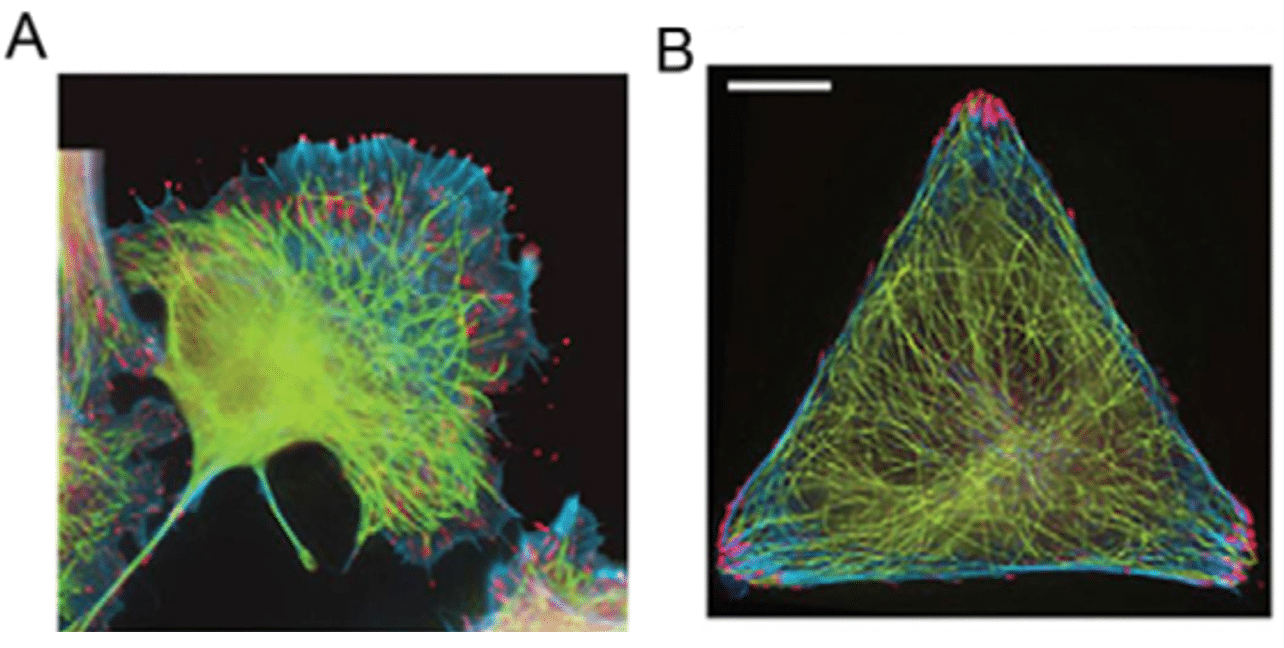
Cytoskeletal organization [2]
(A) In unpatterned cells, cytoskeleton components are overlaped
(B) In cells micropatterned, the cytoskelon is organized.
(MT in green, focal adhesions in red and F-actin bundles in blue)
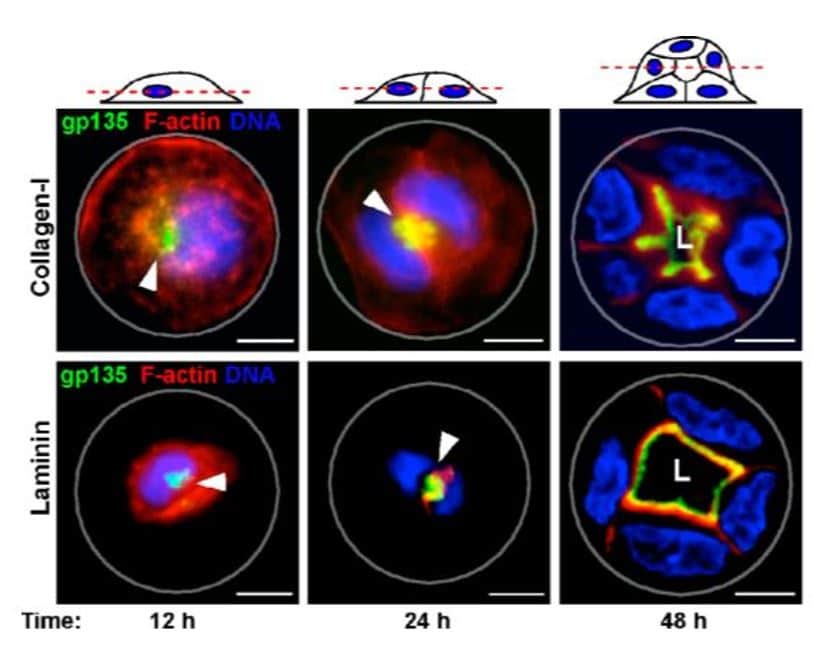
Regulation of apicobasal polarity and lumen formation in MDCK cyst [3]
MDCK cells were seeded on disk-shaped micropatterns for 48 hrs. GP135 (green) localization is restricted to the apical membrane, whereas F-actin is Arrowheads indicate position of the apical membranes. L indicates the lumen.
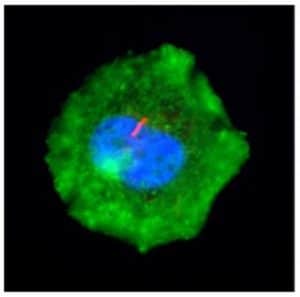
Primary cilium in a single cell confined [4]
Actin (green), nucleus (blue) and primary cilium (red) can be observed.
Intracellular trafficking
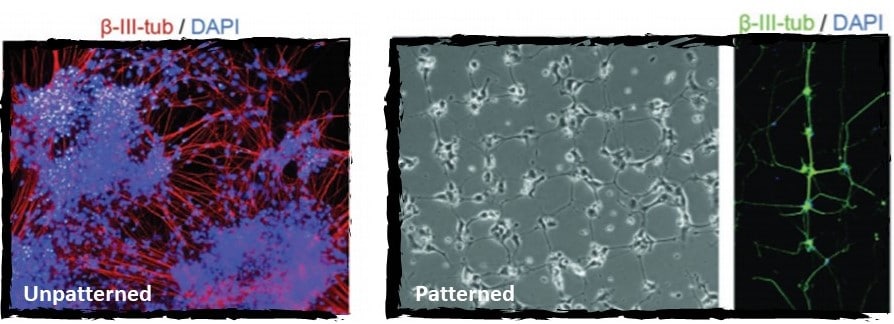
Neuronal network formation [5]
Improvement of neuronal network formation in iPSC-derived neurons cultured in patterned coverslips (round/flower shape) when compared with a culture in a common substrates.
Cytoskeletal organization and cell geometry [2]
Microtubule growth trajectories and F-actin bundles in triangular cells.
(MT in green, focal adhesions in red and F-actin bundles in blue)
Dynamic micropatterns
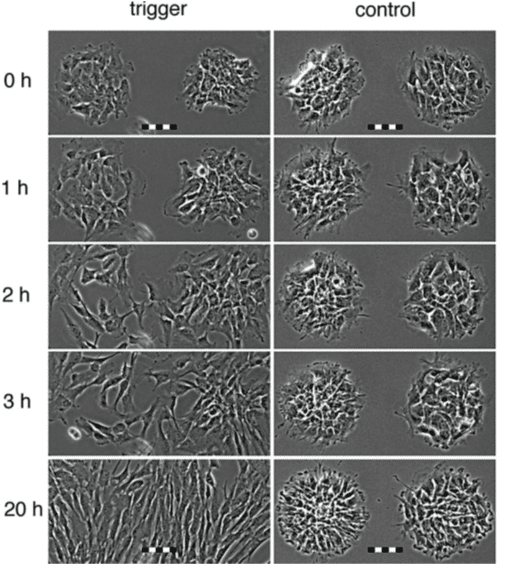
Collective cell migration [6]
When RPE1 cells are cultured on micropatterns with click chemistry technology, cells can migrate after the activation of the migration by BCN-RGD pulse.
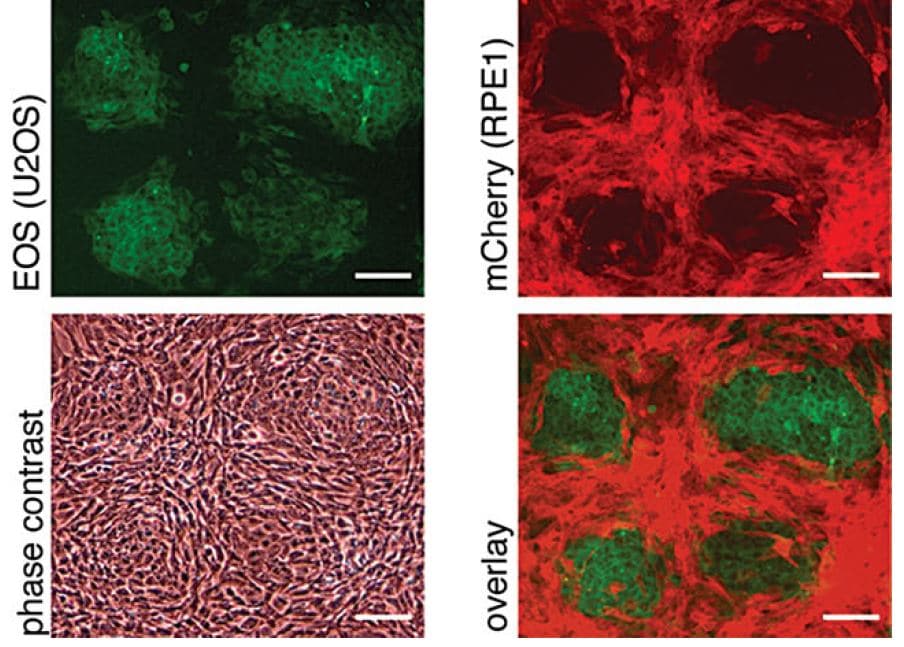
Organization of the different cell types [6]
U2OS cells on 200 µm disks (green) were seeded. After cells filled completely the cells, RPE1 cells (red) were added.
Then, fluorescent miscroscopy were used to analyze the organization of the cells.
[1] Pouthas, F., et al. (2008). Journal of cell science, 121(14), 2406-2414.
[2] Huda, S., et al. (2012). J Cell Sci, 125(23), 5790-5799.
[3] Rodríguez-Fraticelli, A. E, et al. (2012). J Cell Biol, 198(6), 1011-1023
[4] Rodríguez-Fraticelli, A. E, et al. (2012). J Cell Biol, 198(6), 1011-1023
[5] Burbulla, et al. (2016). Advanced Healthcare Materials, 5(15), 1894–1903.
[6] van Dongen, S. F., Maiuri, P., Marie, E., Tribet, C., & Piel, M. (2013). Advanced Materials, 25(12), 1687-1691.